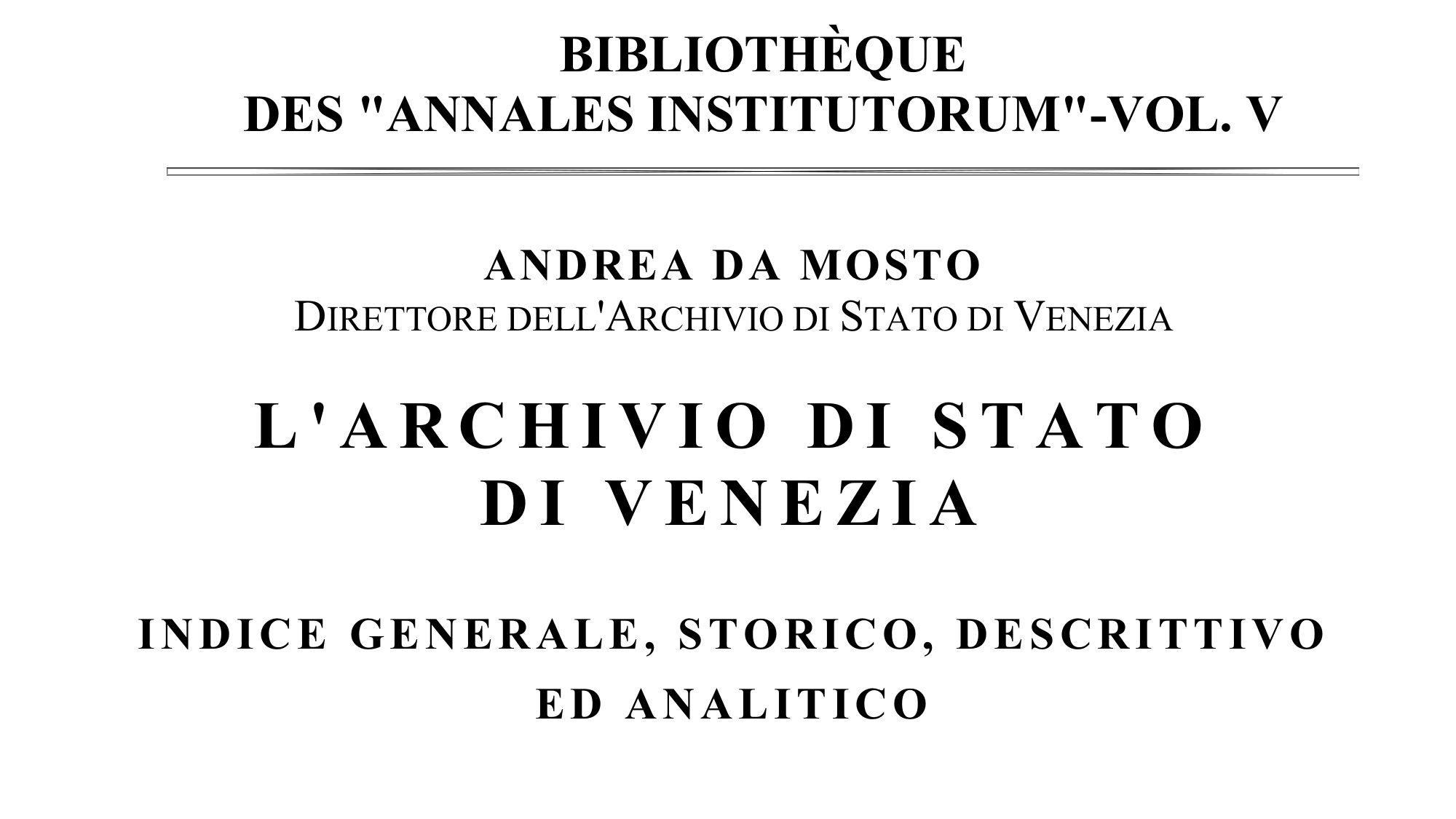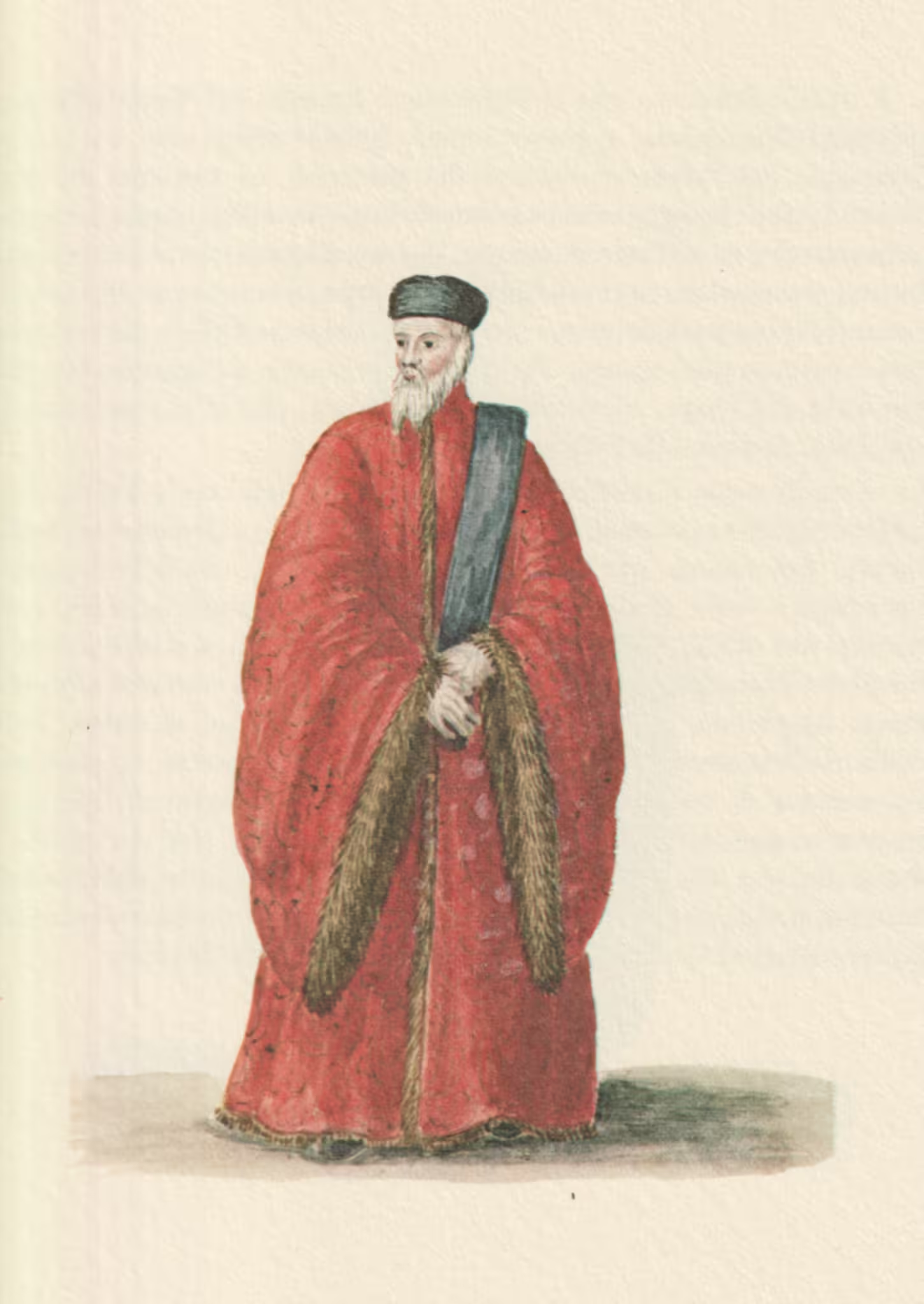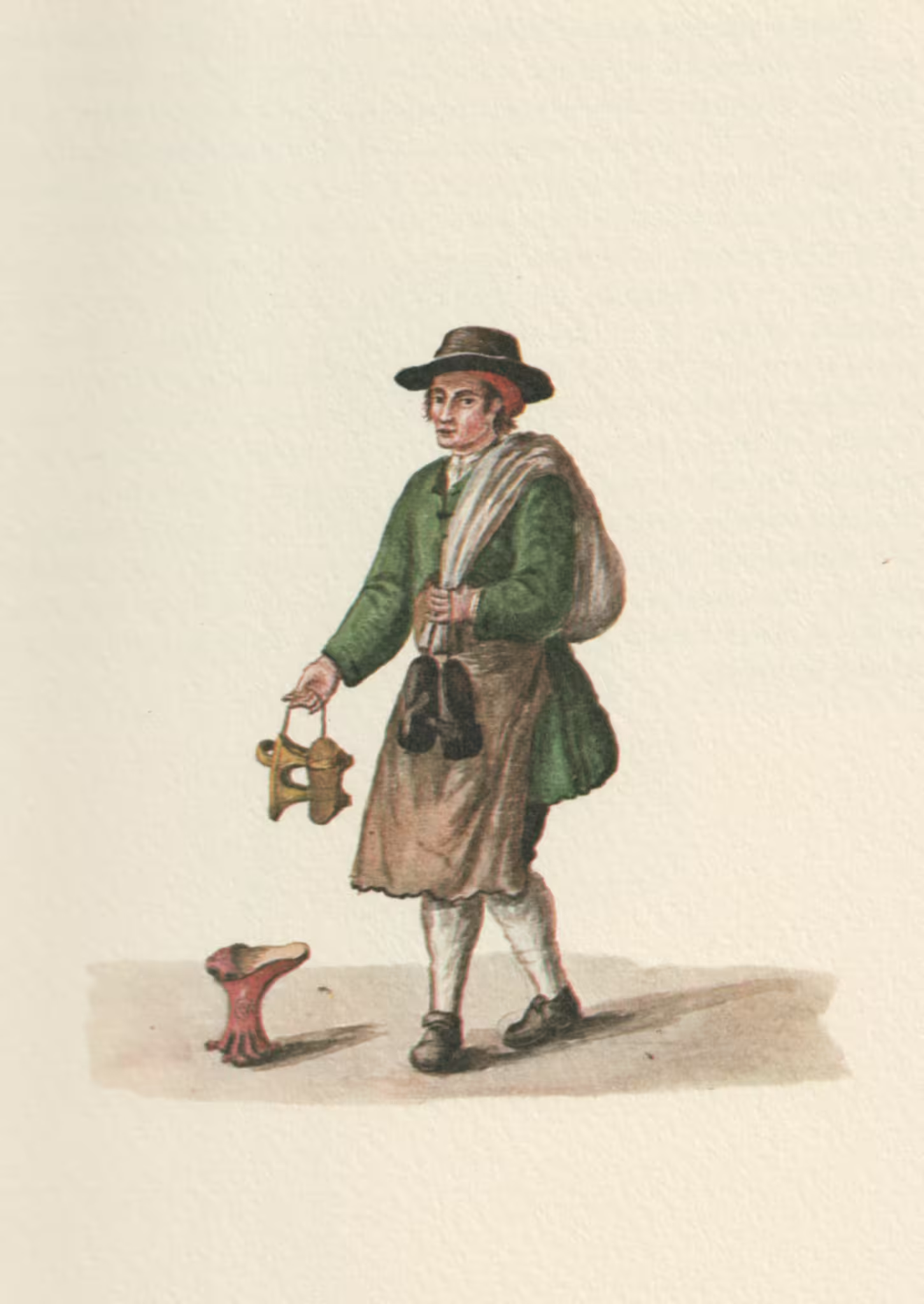Cavalieri di San Marco
The L’Archivio di Stato di Venezia: indice generale, storico, descrittivo ed analitico by Andrea Da Mosto was published in 1937. Besides being a general index of the holdings of Venetian documents in the state archive, it contains short historical descriptions of most Venetian offices and magistracies.
Andrea Da Mosto (1868-1960) was director of the Archivio di Stato di Venezia (1936-1937).
The Venetian Republic had only one order of chivalry, that of S. Marco. It is not clear when it was established. Verifiably, it was granted by the Venetian government as early as in the 15th century. It was conferred on patricians and people of greater importance by the Senate or the Maggior Consiglio and on people of lesser status by the Doge.
The insignia awarded by the Doge consisted of a cross, bifurcated at the ends, of blue enamel edged with gold with the crowned lion of St. Mark1 in the centre and was worn around the neck with a Venetian gold chain (manin) with decorated clasps. Instead, the one that was awarded by the Maggior Consiglio or the Senate often consisted, in addition to the cross, of a rich necklace with a medal, which had the winged lion on the obverse and a commemorative inscription on the reverse. The richest necklaces were worth several thousand ducats.
When the Venetian patricians wore the toga they could not wear insignia, and instead they used to wear the stole of the ordinary toga threaded with gold or the stole of the ceremonial toga made of gold fabric. From this usage came the denomination of knights of the golden stole for the patrician knights.
The golden stole did not always indicate the order of St. Mark for patricians because they also wore it as an insignia of the knighthood received as ambassadors from foreign princes and sovereigns and recognized by the Venetian government upon their return to their homeland.
Translator’s notes
- The figure of the crowned lion was called the Leone di San Marco in maestà. ↩︎
Original Italian text
Cavalieri di San Marco
La Veneta Repubblica aveva un solo ordine cavalleresco, quello di S. Marco. Non si sa bene quando fosse istituito. Certo, già nel secolo XV, veniva concesso dal veneto governo. Ai patrizi e ai personaggi di maggior importanza era conferito dal Senato o dal Maggior Consiglio e alle persone di minor riguardo dal Doge.
L’insegna conferita dal Doge consisteva in una croce biforcata alle estremità di smalto azzurro orlato d’oro con nel centro il leone di S. Marco in maestà e veniva portato al collo con una catenina d’oro veneziana (manin) con fermagli lavorati. Invece quella che veniva conferita dal Maggior Consiglio o dal Senato consisteva spesso, oltre che nella croce, in una ricca collana con medaglia, che aveva nel dritto il leone alato e nel rovescio un’iscrizione ricordo. Le collane più ricche erano del valore di più migliaia di ducati.
I patrizi veneti quando vestivano la toga non potevano fregiarsi delle insegne, ed invece di queste usavano portare la stola della toga ordinaria filettata d’oro o la stola della toga di cerimonia di stoffa d’oro. Da questo uso venne la denominazione per i cavalieri patrizi di cavalieri della stola d’oro.
Non sempre la stola d’oro indicava, nei patrizi l’ordine di S. Marco, perché la portavano anche come insegna del cavalierato avuto da principi e sovrani stranieri nelle ambasciate e riconosciuto dal veneto governo al loro ritorno in patria.
Da Mosto, Andrea. L'Archivio di Stato di Venezia : indice generale, storico, descrittivo ed analitico in Bibliothèque des Annales Institutorum, 5. Roma : Biblioteca d'arte, 1937, p. 28.
Related articles
- Doge — ASV Indice
- Senato — ASV Indice
- Maggior Consiglio — ASV Indice
- The Consiglio Maggiore
- State institutions of the Republic of Venice
- Chronology of major Venetian state institutions





Leave a Reply